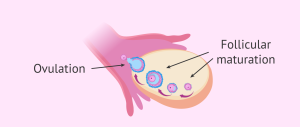What Is Menstruation? As teens embark on the journey of puberty, this section delves into the intricacies of menstruation, providing valuable insights into the menstrual cycle’s duration, onset, and the significance of the first period, known as “menarche.” Menstrual Cycle Overview The menstrual cycle, approximately four weeks long, is explored in detail. This includes the
What Is Menstruation?
As teens embark on the journey of puberty, this section delves into the intricacies of menstruation, providing valuable insights into the menstrual cycle’s duration, onset, and the significance of the first period, known as “menarche.”
Menstrual Cycle Overview
The menstrual cycle, approximately four weeks long, is explored in detail. This includes the initial irregularities that may occur and a breakdown of variations in monthly menstrual loss with the help of a detailed comparative table, offering teens a comprehensive understanding.
Menstrual Flow
Detailed exploration into the specifics of menstrual flow, covering its duration, intensity, and the composition of the discharge. A comprehensive breakdown aids in understanding the natural variations in this crucial bodily function.

Image by: yendex.com
What Does a Menstrual Period Feel Like?
Delve into the physical and emotional aspects of menstruation, ranging from common symptoms like cramps and bloating to hormonal fluctuations. This section not only provides insights into these symptoms but also offers effective strategies for managing them and maintaining overall well-being.
Coping with Cramps
Understanding the physiological aspects of cramps and bloating is crucial. Practical tips for relief are highlighted, along with the role of hormones, recommending simple yet effective non-prescription medications to alleviate discomfort.

Image by: medicalnewstoday.com
When to Seek Medical Advice
Guidance is provided on when to consult healthcare providers for severe symptoms, excessive bleeding, irregularities, or concerns about pregnancy. Emphasis is placed on open communication and seeking professional help when needed, fostering a proactive approach to health.
How Long Does a Period Last?
Insights into the duration and frequency of periods, especially during the early stages of menstruation, are addressed. Common concerns are explored, and reassurance is provided about the normalcy of irregularities during this transitional period.
Establishing Regularity
Navigating the transition from irregular periods to a more predictable cycle is crucial for teens. Encouragement is offered to monitor and plan ahead, fostering a healthier menstrual experience.

Image by: yendex.com
What Is Ovulation?
The concept of ovulation—the release of a mature egg—is unveiled. Brief insights into abdominal discomfort during ovulation are provided, along with suggestions for medication to alleviate any associated discomfort.

Image by: yendex.com
What About PMS?
Insights into premenstrual syndrome (PMS) are offered, discussing common symptoms and emotional changes. Encouragement is given for open dialogue with healthcare practitioners, especially for serious symptoms that may impact daily life.

Image by: yendex.com
Tampons vs. Pads: Making Informed Choices
A comprehensive discussion on using tampons and pads is presented. Considerations of comfort, hygiene, and lifestyle are addressed, with a particular focus on preventing leakage and infections.
| Feature | Tampons | Pads |
|---|---|---|
| Placement | Inserted into the vagina | Worn externally in the underwear |
| Absorbency Options | Various sizes and absorbencies | Varied absorbencies for light to heavy flow |
| Comfort and Movement | Generally less bulky and restrictive | Can feel bulkier, but offer full coverage |
| Suitability for Sports | Preferred by some for active sports | Suitable for various activities |
| Changing Frequency | Every 4 to 8 hours | Every 4 hours or as needed |
| Overnight Use | Can be worn overnight, with precautions | Designed specifically for overnight use |
| Risk of Leakage | Lower risk when changed regularly | Risk of leakage, especially with heavy flow |
| Hygiene Concerns | Requires careful hygiene practices | External use minimizes internal infection risk |
| Toxic Shock Syndrome (TSS) Risk | Higher risk if not changed frequently or high absorbency used | Lower risk, but still present; change regularly |
| Convenience | Easily concealed, suitable for on-the-go | Visible but straightforward to use |
| Environmental Impact | Generally produces less waste | Creates more waste due to disposal |
Safety Tips in Points:
- Change Regularly: Ensure tampons are changed at least every 4 to 8 hours.
- Use Lowest Absorbency: Choose the lowest absorbency tampon based on your flow.
- Avoid Overnight Risks: Insert a new tampon before bed and change it first thing in the morning.
- Be Mindful of TSS: Tampon use increases the risk of toxic shock syndrome (TSS), especially with infrequent changes or high absorbency.
- Immediate Action: Seek medical help if you ever have trouble removing a tampon.
Is It Normal to Miss a Period?
Explore factors like stress, illness, and exercise that can lead to missed periods. Emphasize the need for timely medical consultation if irregularities persist, fostering a proactive approach to health.

Image by: yendex.com
What If I’m 16 and Haven’t Yet Started My Period?
Encouragement is offered to girls who haven’t started their period by age 16 to consult with a doctor. Potential concerns are addressed, promoting a proactive stance towards healthcare and well-being.
In this extensive guide, we unravel the complexities of menstruation, providing in-depth information and empowering teens to navigate this natural phase with confidence and knowledge.
Conclusion
Embarking on the journey of puberty and menstruation is a significant phase in every teen’s life. This comprehensive guide has unraveled the complexities of menstruation, providing in-depth insights into the menstrual cycle, symptoms, and essential health considerations for teens.
Understanding the intricacies of the menstrual cycle, from its onset to the first period (menarche), empowers teens with knowledge about their bodies. The detailed comparative table sheds light on the variations in monthly menstrual loss, fostering a deeper comprehension of this natural process.

















Leave a Comment
Your email address will not be published. Required fields are marked with *